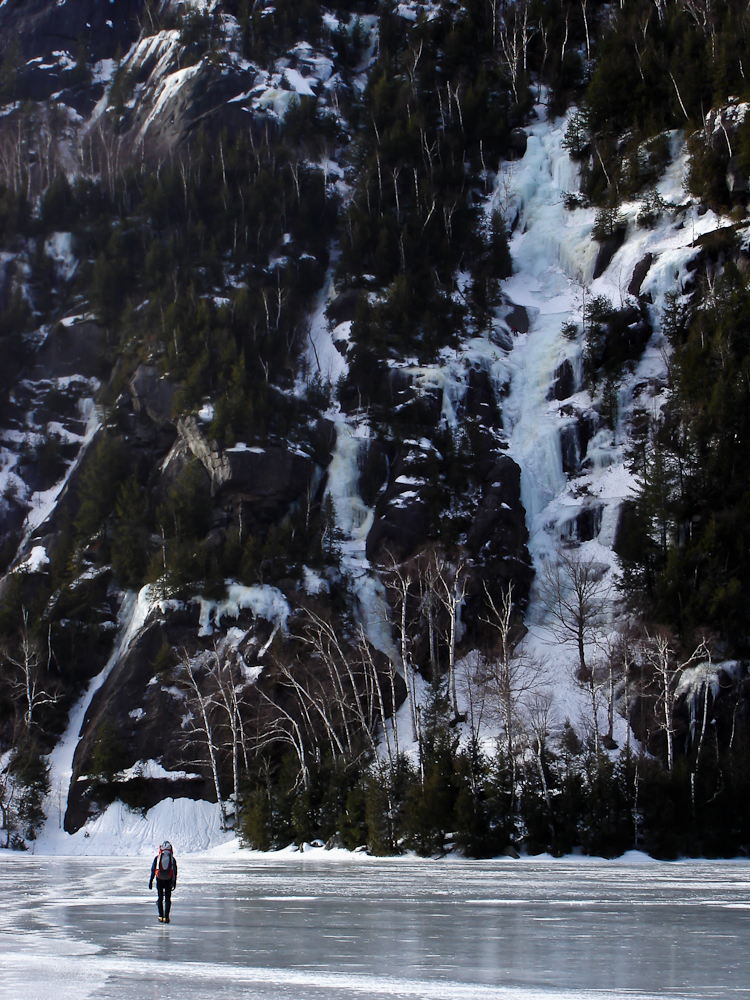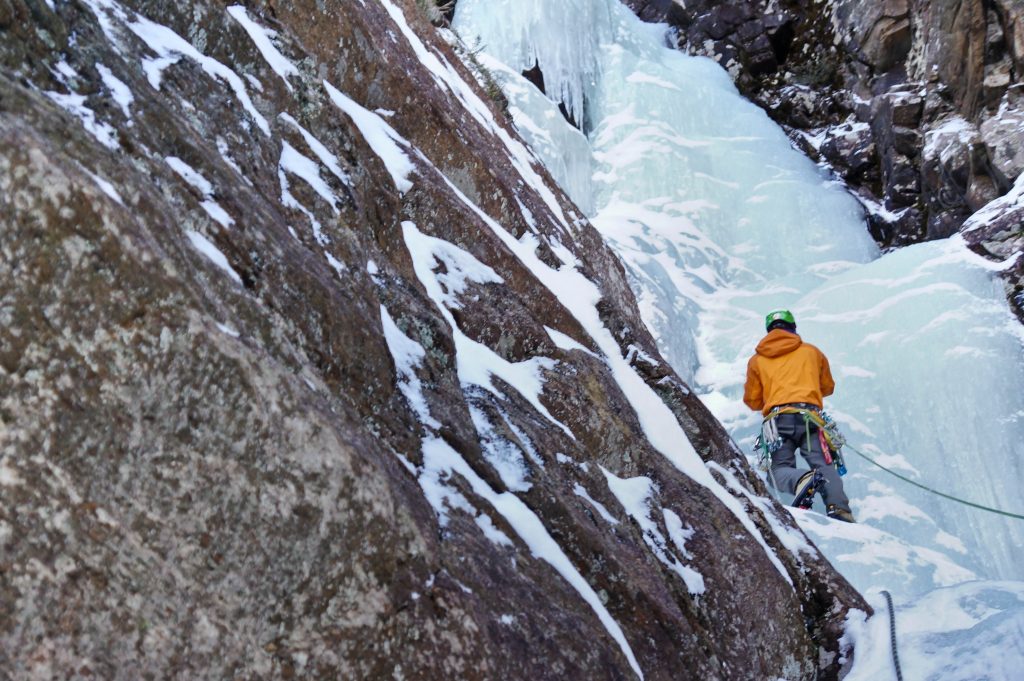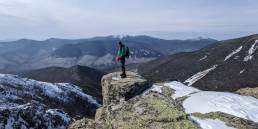Winter is finally in full swing here in the Northeast, with the mercury hanging well below that magical 32-degree line in many places. And, that can only mean one thing: ice! Whether you’re a seasoned ice climber or a beginner just looking to get that first taste of vertical water, Lake Placid and the Adirondacks are home to some of the United States’ best and most accessible ice climbing destinations. The area offers varied terrain—from shorter, low-angled waterfalls to longer, more difficult routes—making the Adirondacks inviting for all skill levels. What’s even better is, EMS offers a range of ice climbing and mountaineering courses out of Lake Placid, tailored to your skill level. We caught up with EMS Climbing School guide Will Roth to get you the low-down on climbing Adirondack ice.
Guide: WILL ROTH
School: LAKE PLACID
Specialty: ICE, ALPINE, TRAD, and SPORT CLIMBING
Roth started climbing while attending Plymouth State University in New Hampshire, and quickly fell in love with all of its aspects. Will’s passion is demonstrated through his impressive resume of ascents: He’s climbed all over the Northeast and American West, scaled the fabled big walls of Yosemite, completed high-altitude ascents in Peru and Bolivia, and winter-climbed in Scotland and Chamonix, just to name a few. “It’s impossible for me to get bored,” Roth said. “[Climbing] gives me a purpose. I’m always thinking about how I’m going to get things done, so I can climb more.”
With so much energy and passion for the sport, Will inevitably became a guide. Inspired by a great climbing mentor who was a guide himself, Will found his niche in the Adirondacks, running an ice climbing program for the Boy Scouts. He transitioned into his role as an EMS guide from there.
The Adirondacks offer the perfect backdrop for Will to teach his clients the fundamentals and beyond, and he’s quick to share the wisdom he’s accrued over the years: “Go with a guide service like the EMS climbing school that has high-quality gear for you to borrow. In ice climbing, quality gear can make a huge difference in your initial impression.”
If you do take an EMS course in the Adirondacks, rest assured that you will be outfitted with all of the proper technical gear to move on steep snow and ice, as well as expert instruction to give you a full understanding of what’s required to climb ice in the wintertime.
Before you depart, Will recommends bringing lots of easy-to-consume, high-calorie snacks. He also stresses the importance of staying hydrated by bringing along warm liquids: “Staying hydrated will make your day more enjoyable, and it’s easier to drink warm liquids. Cold fluids usually aren’t very appealing when it’s freezing out! Also, a warm belay jacket is important for comfort when not climbing.”
When you’re ready to go, use this list from Roth for some of the Adirondacks’ best routes:

Chouinard’s Gully (NEI 3 300′)
This is the route that Yvon Chouinard and his crew supposedly climbed during their historic 1969 visit. It’s three pitches of moderate ice, with the first being the steepest. Although you can rappel the entire route, walking off down a trail from the top keeps congestion on busy days to a minimum. This one is a classic and can get busy.
Pharaoh Mountain (NEI 3+)
If this route is in, get on it! It’s a long day, no matter how you do it. After a several-mile approach, three moderate pitches lead to the top. The first is the steepest, and after that, the higher you get, the easier the angle. Good map and compass skills and an overnight kit are a must on this excursion, especially if the weather is bad and visibility low. Most doing this climb for the first time significantly underestimate the time it takes to go from car to car, but it’s probably the Adirondacks’ best route of its grade.

Multiplication Gully (NEI 3+ 225′)
In the Adirondacks, we don’t have many climbs like this. It is a true gully, with steep walls on either side. Two pitches of moderate ice top out at a cliff that has vegetation so thick you better rap off. This climb truly is a gem, and being tucked back into a cliff with views out toward Whiteface Mountain really makes it stand out.

Positive Thinking (NEI 5- 400′)
This is the big, hard route. The initial long, just under vertical first pitch can be deceivingly thin, while the second pitch is short but steep! And, the last pitch is a fun romp to the trees. Topping this climb out is always satisfying!

Roaring Brook Falls (NEI 3+ 350′)
On a below-zero degree day in the sun, this three-pitch moderate climb is where you want to be. Because you’re climbing a “live” feature, there are always interesting ice formations. More than other ice climbs, this one forms differently every year.
Whether you’re tackling Positive Thinking or taking EMS’s Introduction to Ice Climbing course, you’re going to have a good time in the Adirondacks. The rhythmic swing of the ice axes and the deliberate, precise nature of the task at hand all make for an experience that’s hard not to enjoy. And, what’s better than spending a winter day in the outdoors? For Will Roth, that’s what it’s all about: “The biggest thing climbing does for me [is], it allows me to focus on just one thing; my mind isn’t going in all different directions when I’m climbing. There is something very satisfying about that singular commitment.”
Lucas Kelly
Luke Kelly is a writer and landscape photographer from Red Hook, NY. He says he’s a traveler first, having spent four summers working as a fisherman in Alaska to fund his adventures across the globe. His main goal is to inspire people to get outside, be active, and to explore new places. When he’s not out taking pictures, Luke can usually be found on his paddleboard, road bike, or skis depending on the season. You can follow his trips on Instagram @lukekellytravels.
Related Posts
April 12, 2024
Explore Like a Local: The Outdoor Mecca of North Conway, NH
There's a lot to love about this New…
April 3, 2024
5 Things To Do in the Boston Area During Mud Season
Adventure opportunities are abundant…




